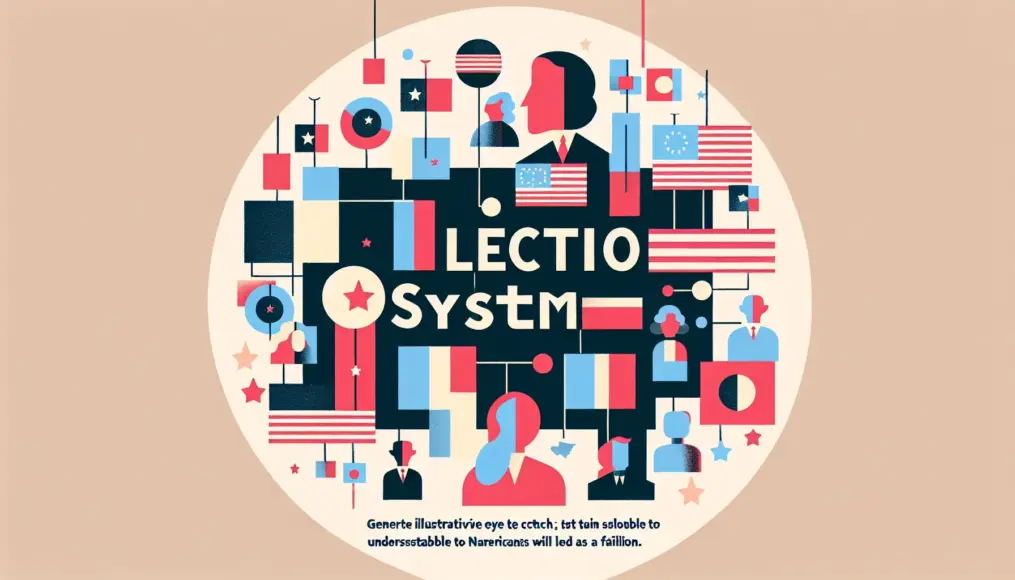The mixed electoral system of single-member districts and proportional representation plays a crucial role in Japan’s electoral framework. Grasping how these systems operate and the impact they have on election outcomes is essential knowledge for us as citizens. Particularly, understanding how the results of elections influence our daily lives and the political landscape can be seen as a vital first step toward fostering a healthier democracy.
In this article, we will delve into the mechanics of single-member districts and proportional representation, explore the significance of the parallel voting system, and consider the future of electoral reforms in Japan. This will be a valuable opportunity to deepen our understanding of the electoral system and reflect on how we can engage with it.
- An overview of the key characteristics and history of single-member districts
- An explanation of how proportional representation works and its effects
- An exploration of the significant impact of the parallel voting system on election results
What is the Single-Member District System? Understanding Its Basic Functions
The single-member district system is a crucial mechanism in elections that determines how candidates are selected. Under this system, representatives are elected from specific regions, ensuring that local voices are heard in government. In Japan, this system was introduced after World War II and has become a foundational aspect of the current electoral framework. Understanding the single-member district system is essential for accurately interpreting election results. Let’s delve into an overview of this system, its history, and its benefits.
Overview and History of the Single-Member District System
The single-member district system is designed to elect one candidate from a specific area, primarily aimed at promoting competition in elections. In Japan, it was implemented in 1994 and has since been widely used in House of Representatives elections. Initially, the goal was to ensure a fair representation of each political party’s seats; however, it has often led to intensified competition among parties, resulting in certain parties gaining a dominant position.
A key feature of this system is its ability to enhance regional representation. Elected officials from each district are expected to directly reflect the voices of their constituents. However, critics argue that the system can disadvantage smaller parties, thus compromising the diversity of the legislative body.
- The single-member district system elects one candidate per region.
- Introduced in Japan in 1994, primarily used in House of Representatives elections.
- While it enhances regional representation, it raises concerns about a lack of diversity.
Benefits of the Single-Member District System
There are several advantages to the single-member district system. First, it simplifies the electoral process, making it easier for voters to choose candidates. This system promotes a politics that is closely tied to local issues, with representatives expected to be accountable for local concerns. As a result, there tends to be increased public interest in elections, which often leads to higher voter turnout.
Moreover, the single-member district system stimulates competition among political parties. Candidates must work hard to gain local support, which can lead to improved policy quality and more dynamic election campaigns. In this way, the single-member district system serves not only as an important means of reflecting local voices but also contributes to invigorating the political landscape.

If you’re interested in this topic, you might also enjoy our article “Explaining the Differences and Benefits of the Single-Member District System and Proportional Representation.” This article offers a detailed comparison of the two electoral systems and their respective advantages, helping you deepen your understanding of electoral frameworks overall.
- Voting is simple and straightforward.
- It promotes politics that are closely tied to local communities.
- It enhances competition among parties, leading to better policy quality.
Characteristics and Impact of Proportional Representation
Proportional representation (PR) is an electoral system that differs from the winner-takes-all approach of single-member districts, allocating seats based on the number of votes each party receives. This system aims to reflect diverse opinions, giving voice to smaller parties and minority groups. When used alongside single-member districts, it has the potential to create more balanced election results. In this article, we will explore the mechanics of proportional representation, its advantages, and the challenges it faces.
How Proportional Representation Works
Proportional representation distributes seats in the legislature according to the percentage of votes each party receives. For instance, if a party secures 20% of the nationwide vote, it would occupy 20% of the available seats in the legislature. This system is designed to enhance diversity in election outcomes, ensuring that not only major parties but also minority voices are represented.
This approach particularly benefits smaller parties, intensifying competition during elections. However, the process through which candidates from each party are selected can be influenced by their popularity and internal power dynamics. Consequently, the allocation of seats may not always accurately reflect the will of the voters, leading to some criticism of the system.
- Proportional representation allocates seats based on party vote totals.
- It aims to ensure diverse opinions are represented.
- Smaller parties find it easier to secure seats, but internal party dynamics can also play a role.
Advantages and Challenges of Proportional Representation
The primary advantage of proportional representation is its ability to reflect a wide range of opinions. By allowing parties with varied perspectives to participate in the legislature, it broadens the political landscape. Additionally, as voters feel more inclined to support smaller parties, interest in elections tends to rise, potentially leading to a more vibrant democracy.
However, there are challenges as well. The distribution of seats among smaller parties can lead to less stable governments. Furthermore, an increase in coalition governments among parties may result in slower policy-making processes and the necessity for political compromises. Thus, while proportional representation fosters diversity, it can also impact the efficiency of governance.

If you’re interested in this topic, we recommend reading “What is Japan’s Electoral System? Exploring Its History and Modern Challenges.” This article provides a detailed look at the historical background of Japan’s electoral system and the current challenges it faces, helping you understand how proportional representation influences society.
- It can effectively represent diverse opinions in the legislature.
- Smaller parties find it easier to gain seats, leading to increased interest in elections.
- It can impact the stability of governments and the efficiency of policy-making.
Understanding the Parallel Voting System and Its Importance
The parallel voting system combines single-member district and proportional representation electoral methods. Its goal is to capture a wide range of opinions while leveraging the strengths of both systems. In Japan, this system is employed in House of Representatives elections, ensuring that election results reflect a balanced representation of local communities and party support. Let’s take a closer look at how the parallel system operates through single-member districts and proportional representation, and consider its impact on electoral outcomes.
The Parallel Voting System: Single-Member Districts and Proportional Representation
In the parallel voting system, each electoral district utilizes a single-member district approach to elect one candidate, while proportional representation allocates seats based on the national vote share of parties. This structure ensures both local representation and a reflection of nationwide support. Specifically, voters elect representatives in their districts, while additional representatives are chosen based on the overall vote count, resulting in a diverse array of seats filled in a single election.
By introducing this system, election outcomes are expected to be more balanced, allowing for both local voices and party opinions to coexist. Additionally, the competitive nature of elections increases, motivating candidates and parties to engage more actively in their campaigns.
- The parallel system combines single-member districts and proportional representation
- It reflects local representation alongside national support
- Increased competition in elections leads to more active candidate engagement
The Impact of the Parallel System on Election Results
The implementation of the parallel voting system is believed to produce more diverse and equitable electoral outcomes. Elected representatives from various regions are tasked with directly addressing local issues, while seats gained through proportional representation facilitate discussions on national matters. This dynamic can invigorate political dialogue and increase the likelihood of a broader range of opinions being represented.
However, the parallel system also presents challenges. For instance, the complexity of the election results can make it difficult for voters to understand the outcomes. Additionally, the rise of coalitions among parties may slow down policy decision-making. Thus, while the parallel system offers diversity, it also raises concerns about the efficiency of the political process.
- Election results become more diverse and equitable
- Local representatives directly address issues, enhancing political engagement
- Challenges include complex results and potential delays in policy decisions
The Future of Our Electoral System and Our Role
In modern democracies, the electoral system is a crucial mechanism for reflecting the voices of the people. However, as political landscapes shift and societies become more diverse, it’s essential for electoral systems to evolve as well. By re-evaluating the roles of single-member districts, proportional representation, and their combined systems, we can chart a path toward better governance. This chapter delves into the necessity for electoral reforms and explores how citizens can engage in the electoral process.
The Need for Electoral Reform
Reforming the electoral system isn’t just about changing rules; it’s also about reshaping how we participate in politics. The current system, which combines single-member districts and proportional representation, has its merits but also faces various challenges. Notably, issues such as imbalances in seat allocation and declining interest in politics have come to the forefront. To break free from this status quo, we need to rethink our electoral system to ensure a broader representation of citizens’ voices.
As part of the reform process, changes aimed at increasing transparency and revising rules to maintain fairness in elections are essential. Additionally, we should consider introducing new voting methods that leverage digital technology. Implementing these reforms could encourage more individuals to take an interest in politics and participate actively.
- Electoral reform impacts political participation
- Current system faces challenges like seat allocation imbalances and decreased interest
- Revisions are needed to enhance transparency and fairness
What Citizens Can Do and How to Get Involved in Elections
Electoral reform isn’t solely the responsibility of politicians and the government. Each citizen’s involvement in elections and expressing their opinions is crucial. For instance, you can start by staying informed about local politics, monitoring the activities of your councils, and understanding policies that affect your community. Before elections, it’s important to review candidates’ platforms and vote for those who align with your values.
Moreover, participating in civic organizations or local initiatives can provide a broader perspective on political issues. Through these activities, you can raise your voice for electoral improvements and turn your ideas into action. When citizens engage actively, it lays the groundwork for a healthier political landscape.
- Individual citizen involvement influences electoral reform
- It’s important to monitor local politics and candidates’ platforms
- Engage in civic organizations and local initiatives to think critically about politics
Conclusion
In this article, we’ve delved into the single-member district system, proportional representation, and the mixed electoral system. Understanding how these electoral systems impact our politics is crucial for fostering a healthier democracy. Notably, the mixed system allows for a balanced reflection of local voices alongside national perspectives.
We’ve also explored the future of electoral systems, emphasizing the importance of individual citizen involvement in these reforms. Elections directly affect our lives, and by actively participating, we can work towards better governance. As we approach the upcoming elections, it’s essential to cherish your opinions and take action.
- Understanding single-member districts, proportional representation, and mixed systems is essential for political participation.
- The mixed system balances local voices with national opinions.
- Citizen engagement is key to electoral reform.
By holding your own opinions and participating in elections, you can help build a better future. We encourage you to share your thoughts and feedback on this article in the comments!


Comment